Is Fall a Good Time to Prune?
Should you prune your plants in your garden and landscape this fall? The answer is no. Read to find out when you should prune your garden.
If you’re planning to add a new tree or three to the landscape this Arbor Day and want to lean native while doing it, here are six of the best small to mid-size U.S. native trees to consider:
One of the season’s earliest bloomers of the season, redbuds are beloved for their magenta to pinkish-lavender flowers that emerge even before the leaves emerge. The leaves are heart-shaped and turn yellow in fall. Some varieties have dark or golden summer leaves as well.
Redbuds grow 18 to 20 feet tall and about 25 feet wide, ideally in rich, loose, well-drained soil out of direct afternoon sun. Hardy in Zones 4-8.
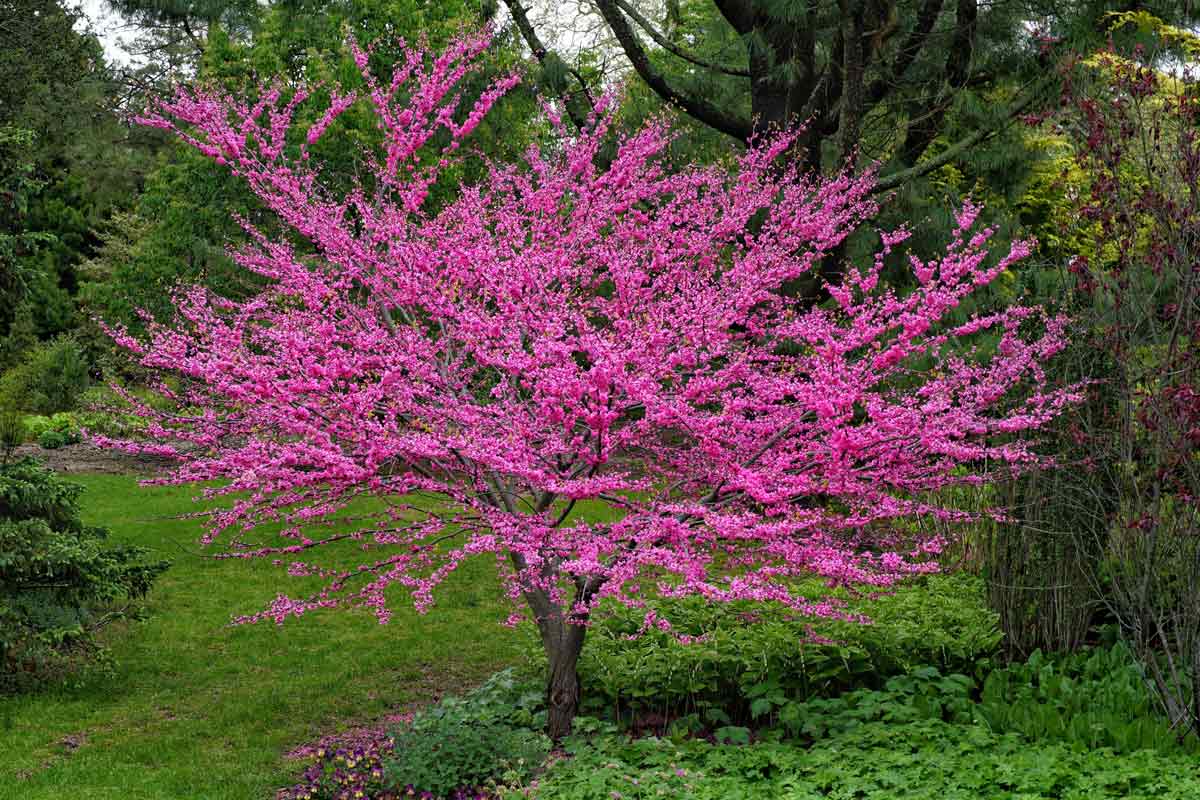
Redbud trees are beloved throughout the U.S. for their magenta flowers that bud during the spring.s Peter Haynes / iStock / Getty Images Plus
This 15- to 18-foot tree turns heads when the branches are covered in late spring with shaggy, confetti-like white flowers that earn the fringe tree the nickname “old man’s beard.” They can be pruned to a single trunk or left to grow multi-stemmed.
Fringe trees grow in full sun or in the under-story below taller shade trees. Leaves turn yellow in fall. Hardy in USDA Zones 3-9.
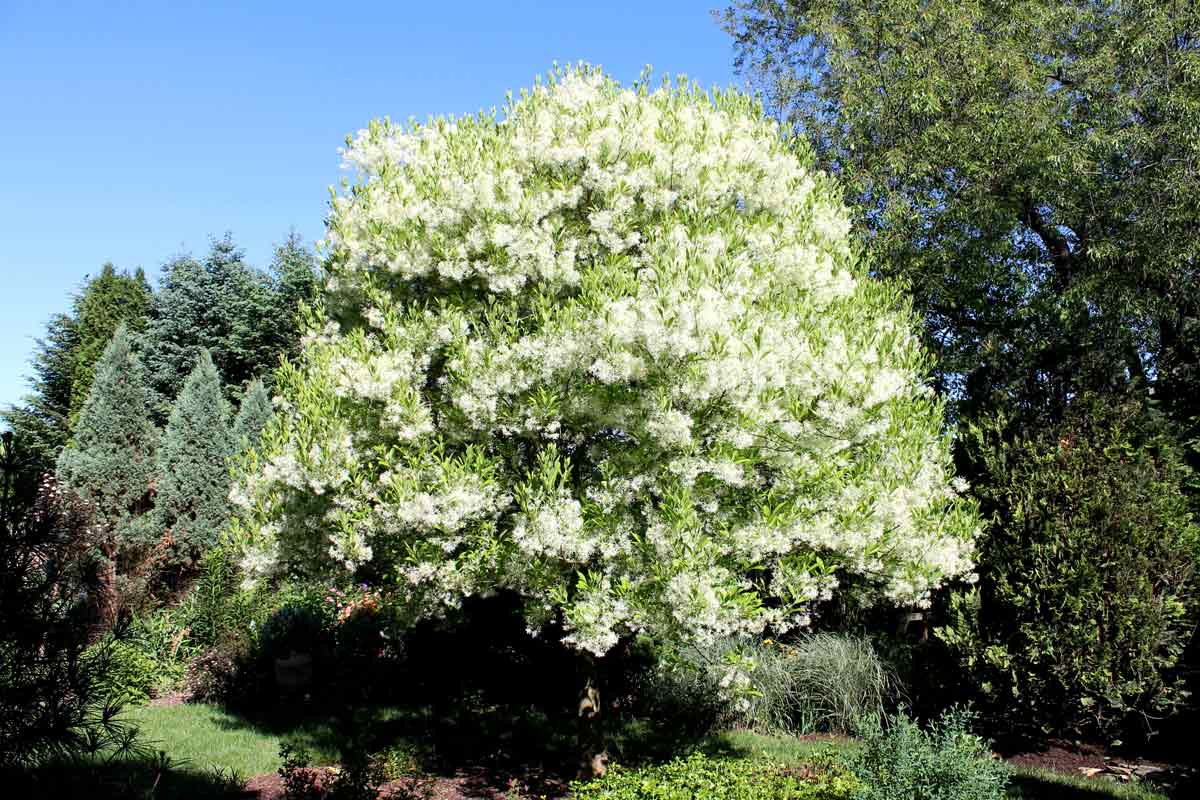
This American fringe tree is blooming in its shaggy white spring flowers. George Weigel
Nicknamed “juneberry” for its blueberry-like fruits in June, serviceberry is another 15- to 18-foot native tree that produces white flowers early in spring and then brilliant orange-red fall foliage in addition to the bird-friendly fruits.
Like fringe trees, serviceberries can be pruned to a single trunk or grown as a multi-stemmed small tree. Grows in full sun or part shade in Zones 4-9 (and some species even colder).
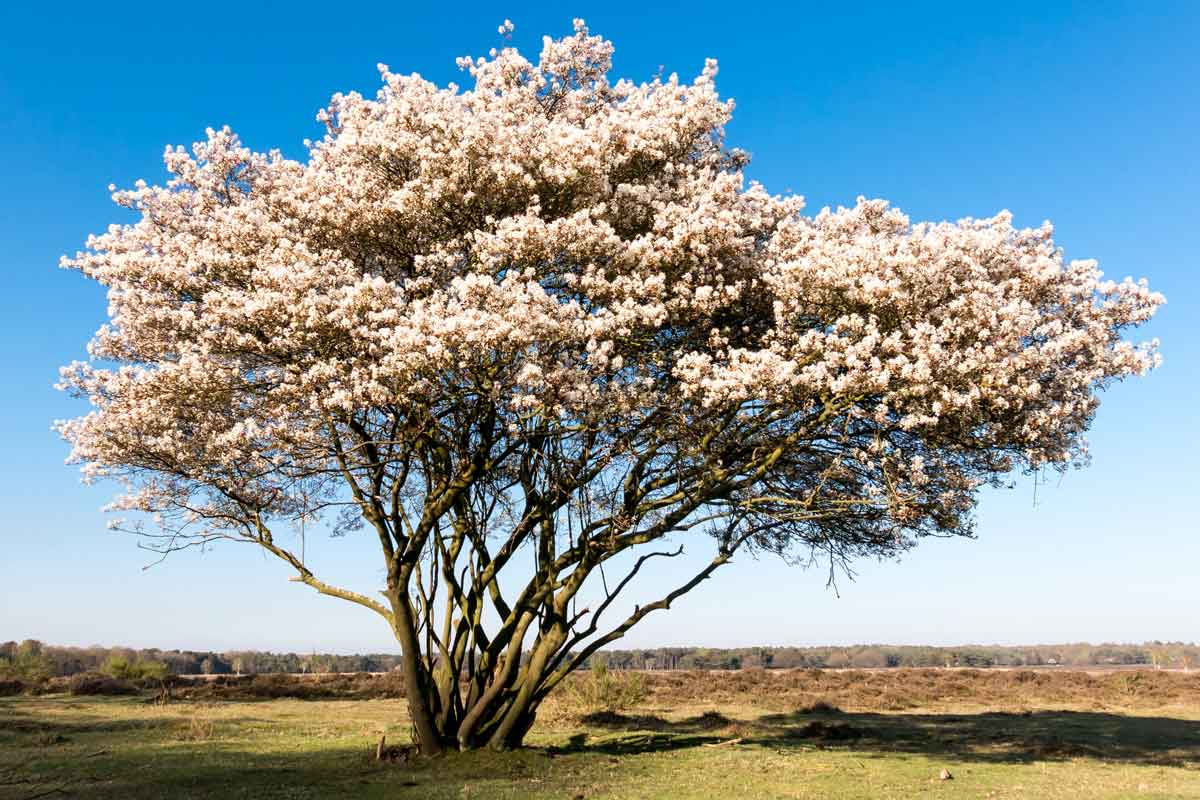
Serviceberry, also called ‘juneberry’, produces white flowers early in spring and then brilliant orange-red fall foliage in addition to the bird-friendly fruits. TasfotoNL / iStock / Getty Images Plus
Arguably our most beloved flowering tree, the American dogwood is covered in showy white or pink flowers in late April, followed by burgundy fall foliage and bright red oval fall fruits that birds relish.
Plant in loose, rich, mildly acidic soil and part shade instead of full sun and clay soil to head off borers and powdery mildew and anthracnose diseases that can affect stressed trees. American dogwoods grow 18 to 20 feet tall and wide in Zones 5-9.
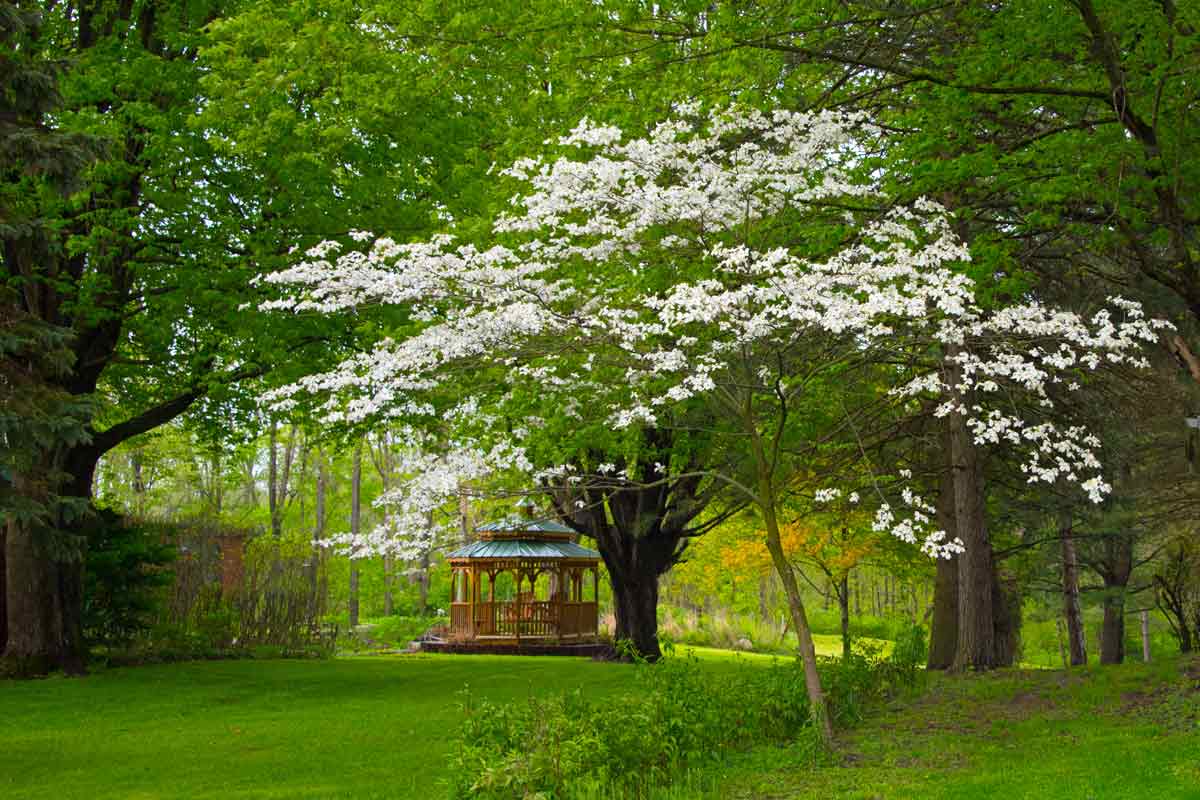
The American Dogwood is one of the most beloved flowering trees, with flowers that are either white or pink in the spring. Pete Bemmer / iStock / Getty Images Plus
An excellent patio-tree choice, sweetbay magnolias are small and slow-growing with dark-green glossy leaves and large, showy white flowers from May into early summer. The flowers are mildly fragrant, and the leaves are evergreen in many (if not most) winters.
Sweetbay magnolias grow 15 to 20 feet tall and slightly less wide, in full sun or part shade, preferably in acidic soil, and in Zones 5-10. It will also tolerate damp soil.
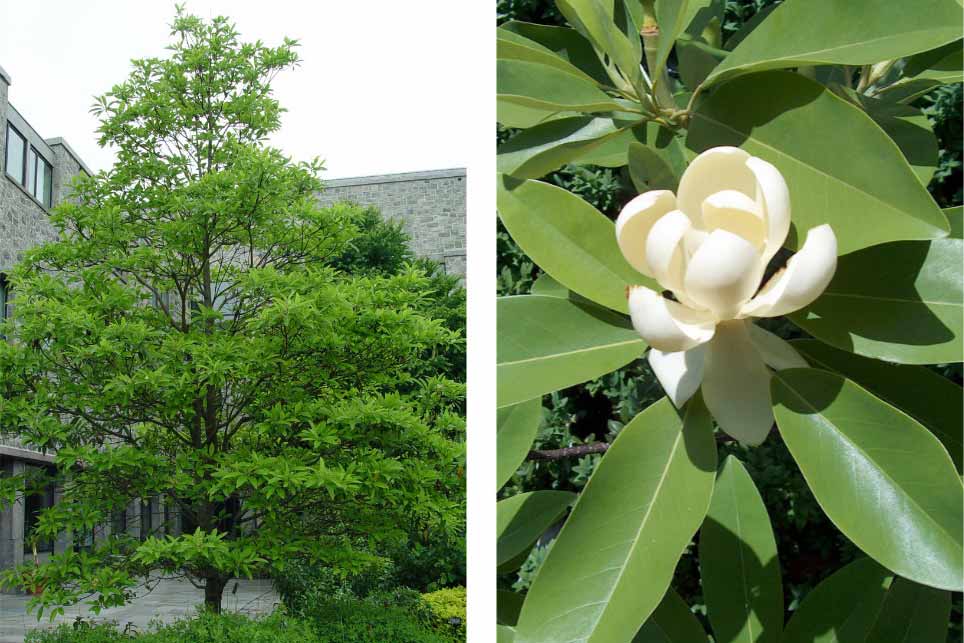
Sweetbay magnolia’s habit, left, makes it a good fit for patio-side planting, while its flowers, right, are mildly fragrant. George Weigel
Also called “tupelo,” blackgum is stunning in its flaming scarlet/burgundy fall foliage. The variety ‘Wildfire’ has red new foliage, too.
Birds love the small black fruits of this mid-sized shade tree. Grows 40 to 50 feet tall and 20 to 25 feet wide in full sun. Hardy in Zones 3-9.
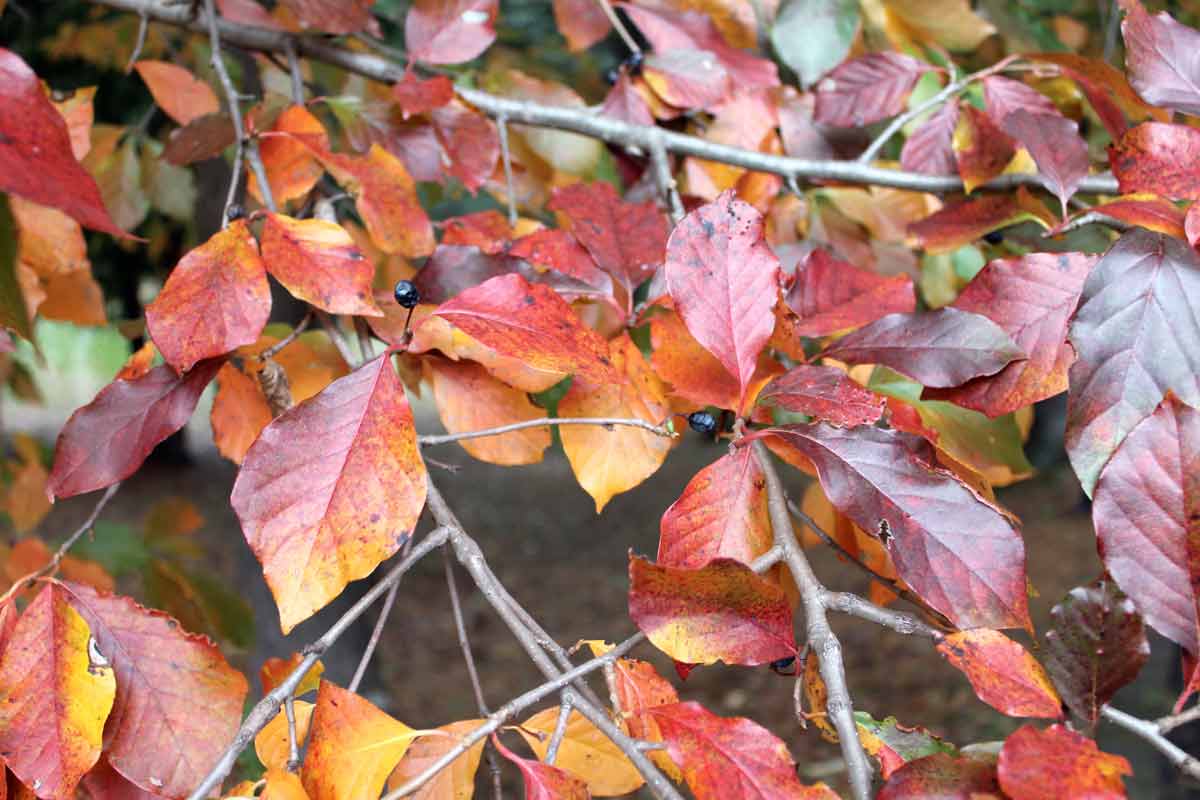
Blackgum leaves turn a warm blend of burgundy and scarlet in fall. George Weigel